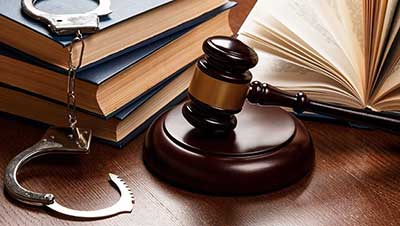Relevance: GS-2: Structure, organization and functioning of the Executive and the Judiciary—Ministries and Departments of the Government.
Key Phrases: suo motu cognizance, draftsman, Investigating Officer, post-mortem, inquest report, deficiencies, inadequacies, Investigation, prosecution,
Why in News?
- The Supreme Court of India, while hearing a criminal appeal, took suo motu cognisance of certain deficiencies and inadequacies which occur during the course of criminal trials. As a result, it issued the necessary directions in Criminal Trials vs The State of Andhra Pradesh (2021).
Directions Issued by Supreme Court
- Preparing A Site Sketch
- The guidelines issued now say that the site sketch prepared by the investigating officer shall be followed by a scaled site plan prepared by a police draftsman, if available, or another authorized or nominated draftsman by the State government.
- Looking at the importance of a site plan (which captures the details of a crime scene and its surroundings) particularly in a case of suspicious death, the police need to develop its own cadre of draftsmen.
- The guidelines mandate that every medico-legal certificate and post-mortem report shall contain a printed format of the human body (with both a frontal and rear view) on its reverse and injuries, if any, shall be indicated on such a sketch.
- Testing Veracity
- The purpose of preparing an inquest report is to ‘ascertain whether a person has died under suspicious circumstances or died an unnatural death and if so, what the (nature of) injuries are and the apparent cause of death’.
- However, if the evidence and materials collected during an inquest ‘make it a prima facie case of any offence’, a criminal case is registered and regular investigation taken up even without any formal complaint from anyone.
- It is settled law that the contents of the inquest report cannot be treated as evidence, but they can be looked into to test the veracity of the witnesses of the inquest.
- However, if the investigating officer himself observes and records evidence, it is treated as ‘direct or primary evidence in the case and the best in the eyes of the law’.
- For Better Scrutiny
- The Supreme Court has directed that ‘in case of death of a person in police action or death in police custody, the magistrate or the IO (Investigating Officer) shall inform the hospital to arrange for photography and videography for conducting post-mortem examination of the deceased’.
- The implementation of the scheme of having trained photographers at police stations (in accordance with Supreme Court’s ruling of 2018 in (Shafhi Mohammad vs the State of Himachal Pradesh) is also under way in a phased manner so that scenes of heinous offences are videographed and photographed using digital cameras as a “desirable and acceptable practice”, and their hash values taken to make the evidence tamper-proof.
- The draft Code now provides that the investigating officer shall seize such photographs and videographs, preserve the original (separate memory card) and obtain certificate under Section 65B (regarding admissibility of electronic records) of the Indian Evidence Act, 1872.
- The purpose of these guidelines is to ensure that there is uniformity of procedure in dealing with cases of death in police action or police custody without any tampering of evidence.
- Therefore, it will be appropriate for the police forces across the States to speed up implementation of the above scheme and have their own cadre of photographers so that expertise is maintained at the police station level.
- On Investigation
- The Supreme Court has directed that ‘the state governments shall appoint advocates, other than public prosecutors, to advise the investigating officer during investigation’.
- Currently, in many States, a public prosecutor advises the investigating officer to check and make up for any deficiency in investigation before submitting the charge sheet in the court.
- The public prosecutor is an officer of the court and his role essentially is inside the court.
- Investigation and prosecution are two different facets in the administration of criminal justice, the three judge Bench of the Supreme Court has now rightly asked the States to separate the two wings.

Note:-
- Suo Motu Cognizance: Suo motu' is a Latin term which means 'on its own motion'. When the Court takes suo moto cognisance of an issue, it institutes a case on its own accord by taking cognisance of a public issue.
- Inquest Report: It is a sort of preliminary inquiry into the cause of a sudden, suspicious and unnatural death, known as inquest.
- Prima Facie Case: A prima facie case is a cause of action or defense that is sufficiently established by a party's evidence to justify a verdict in his or her favor, provided such evidence is not rebutted by the other party.
Conclusion
- Chhattisgarh has already sanctioned a cadre of law officers (who shall function independently of the public prosecutors and will have no role in the court) to assist the investigating officers in educating and improving investigation work. Other States should also follow suit.
- While the creation of a cadre of draftsmen and photographers may take time, executive orders may be issued without further delay, followed by training of investigating officers and medical doctors, in order to implement the Supreme Court’s directives.
Sources: The Hindu
Mains Question:
Q. How gaps in criminal justice be filled? Discuss various directions issued by Supreme Court in this regard? (250 words).







